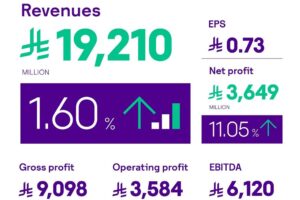Red Hat, Inc. has announced that an extended collaboration with Samsung to offer a virtualized radio access network (vRAN) solution with enhanced integration and automation capabilities. The technology will be designed to help service providers better manage networks at scale while also addressing the demands of 5G through increased flexibility and operational efficiency. With Red Hat as one of Samsung’s key platform partners, service providers will be able to use this solution to realize a faster return on investment (ROI) while helping to mitigate the production risks of building more consistent and regulatory compliant deployments and operations across potentially tens of thousands of sites. Customers can then use the platform to build innovations based on private 5G, multi-access edge computing (MEC), 5G core networks and more.
Open source software is the driving force behind 5G RAN as service providers aim to successfully compete, boost revenue and meet rising customer demands in today’s cloud-centric world. Disaggregated RAN components are powered by robust computing functions that require a consistent cloud infrastructure. Service providers need to validate that each RAN component works together to support end users, whether it’s an individual using a cell phone or a large telecommunications organization supporting business operations.
Samsung and Red Hat are working together to help address the constant need for service providers to validate network functionality, interoperability and performance of an end-to-end vRAN solution. The companies’ solution will be designed to provide customers with:
An end-to-end virtualized solution that helps reduce complexity and mitigate operational and deployment risks with enhanced automation and integration capabilities;
A future-proof and flexible network that can adapt to rapidly changing demands as admins will be able to remotely apply updates.
This solution will build on an array of Red Hat open hybrid cloud technologies including Red Hat OpenShift, the industry’s leading enterprise Kubernetes platform, Red Hat Enterprise Linux, Red Hat Advanced Cluster Management for Kubernetes and Red Hat Ansible Automation Platform.
The extended collaboration with Samsung shows the scale of challenges that can be addressed by Red Hat’s robust partner ecosystem, which delivers solutions and services that provide customers with choice at every architectural level. This helps service providers implement a hybrid or multicloud strategy with the flexibility to develop and operate in any cloud environment, and also empowers service providers to adjust their infrastructure according to strategy, business or technology needs as they evolve.
As service providers continue to evolve, they’re evaluating sustainability alongside innovation. According to a Red Hat-sponsored sustainability study, RAN is responsible for 75% of a service provider’s total power consumption, indicating a potential need for service providers to optimize energy consumption. With Red Hat OpenShift, service providers will be able to optimize their energy consumption in multiple dimensions including: the node, cluster, system-level and domain-levels. For example, disabling unused components within a service provider’s network will result in noticeable reductions in power consumption.
This vRAN solution by Red Hat and Samsung will be available as a customer proof-of-concept in the latter half of 2023. Learn more about Red Hat’s latest work with Samsung at the Red Hat booth (#2F30) at MWC Barcelona.
Red Hat and Samsung collaborate on new 5G Radio Access Network (RAN) Solution












